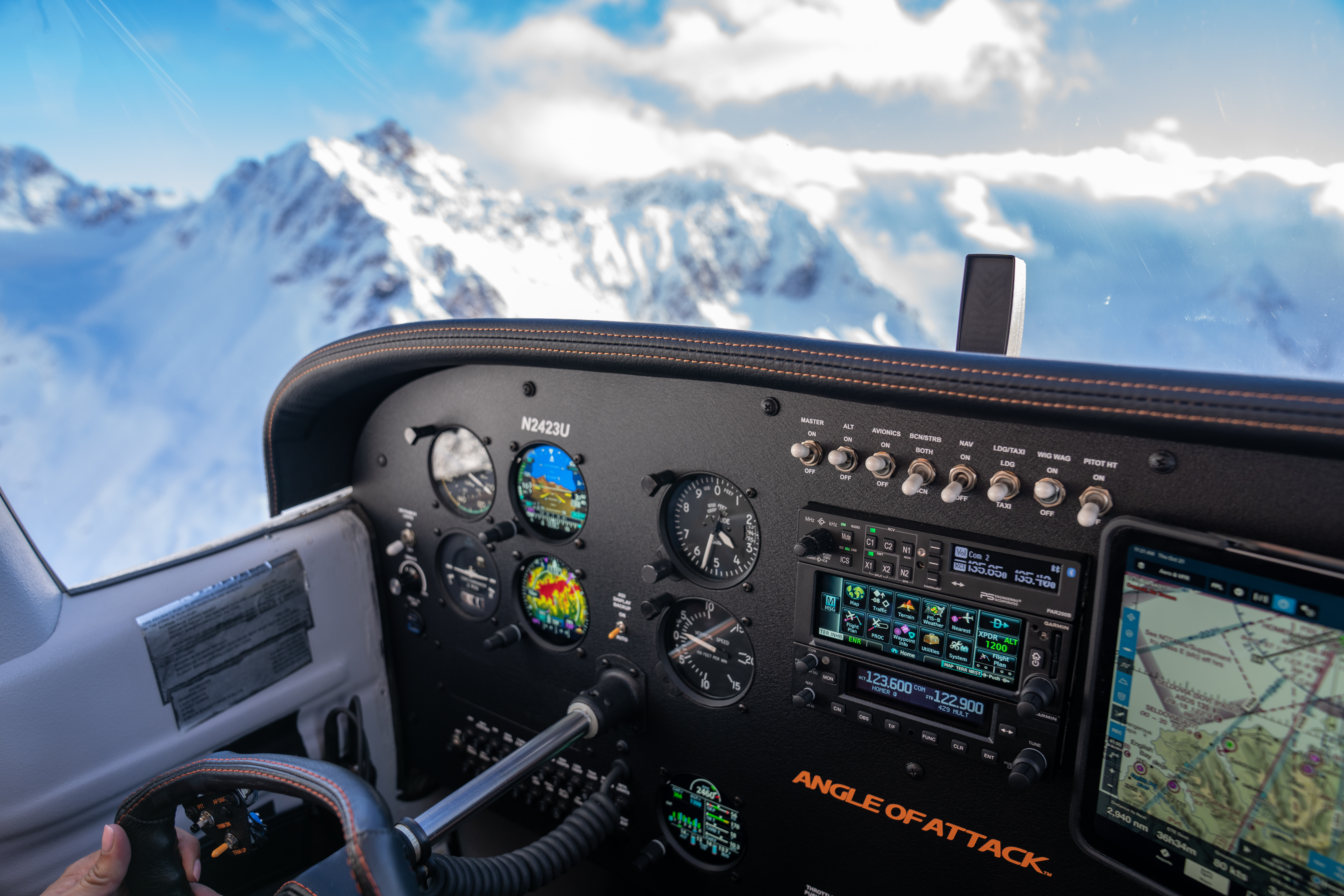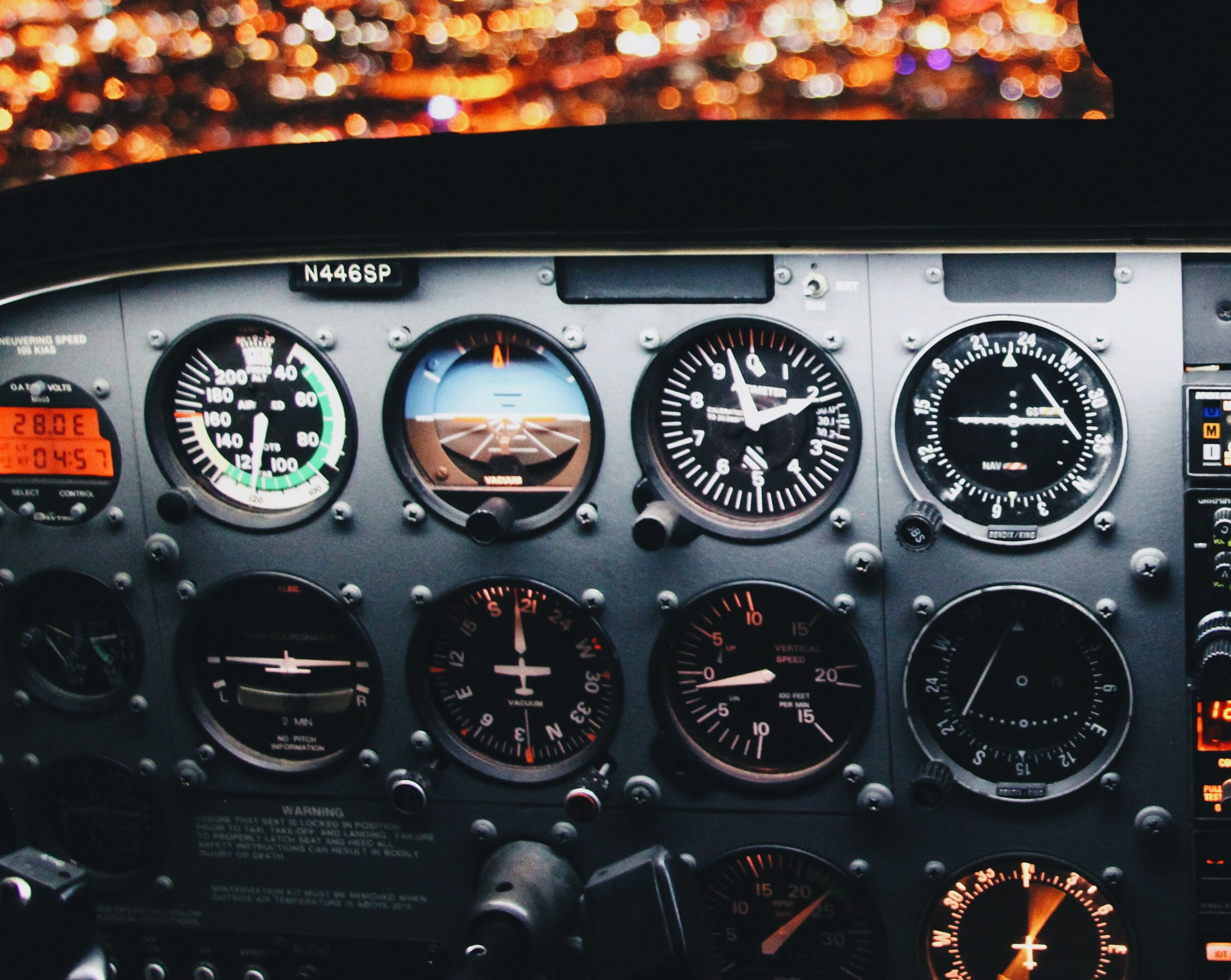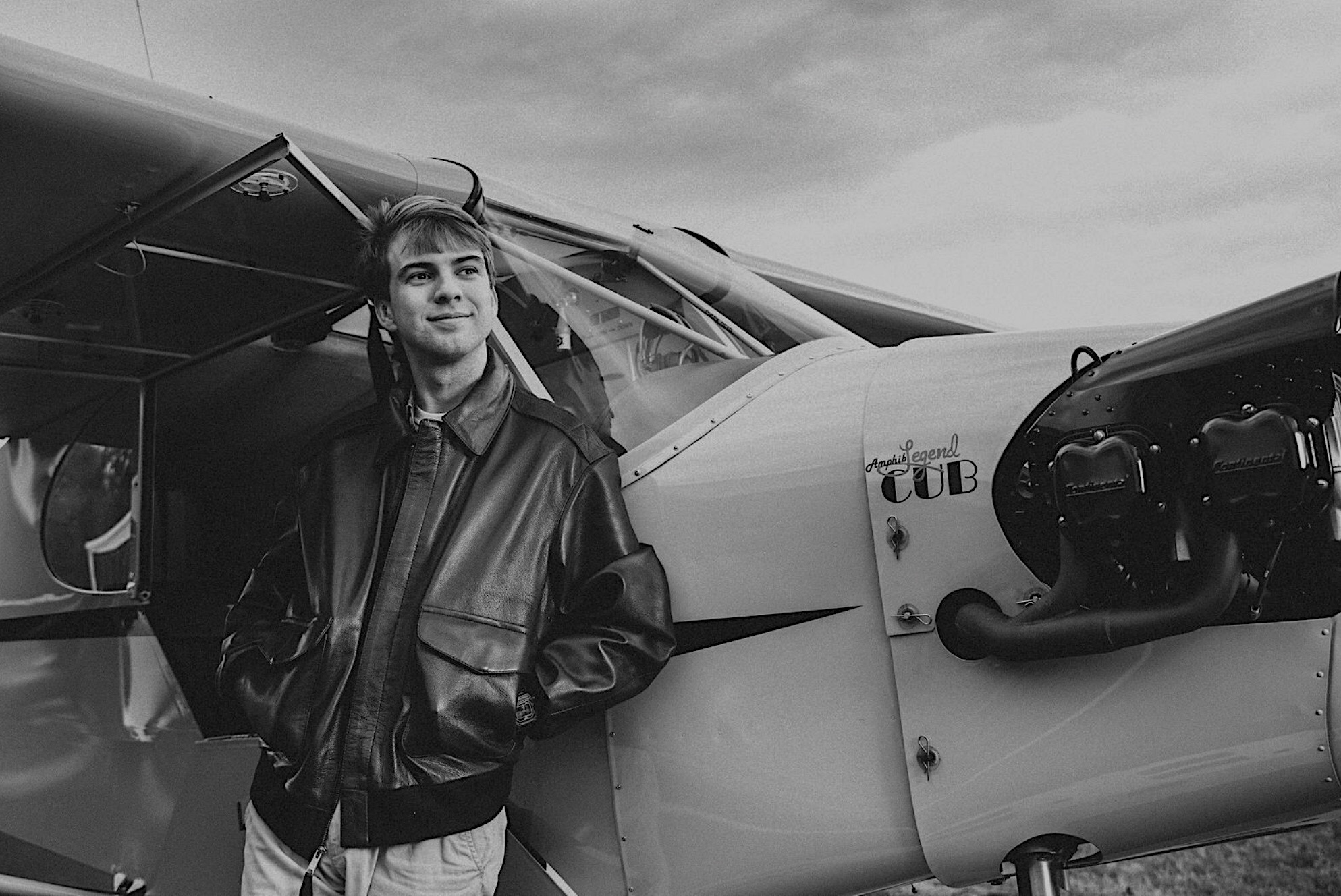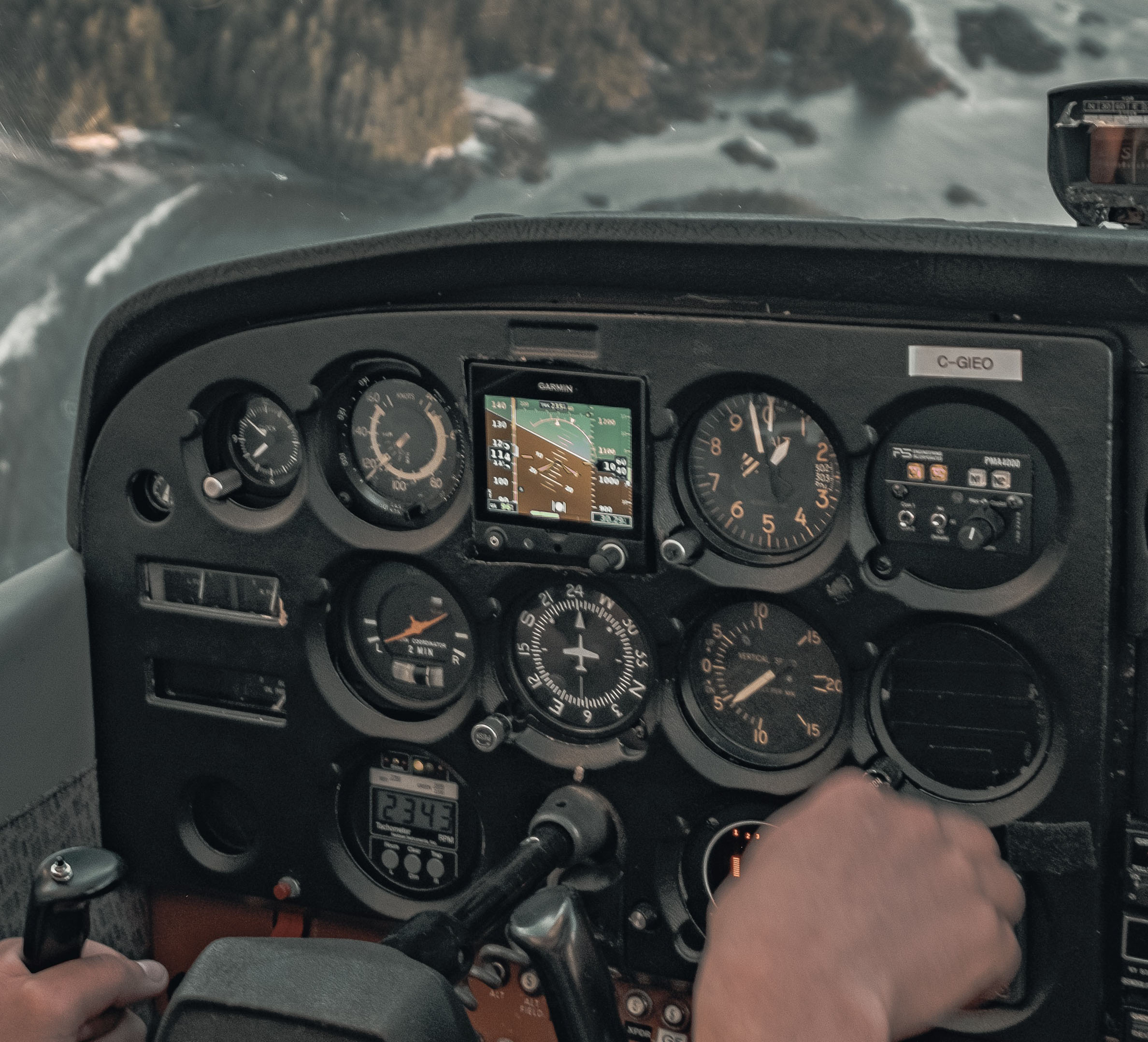
Without them, instrument flying would be impossible. The gyroscopic instruments are three of the most important in your panel. But do you know how they work? Most pilots don’t or have completely forgotten. Well fear not, today we are going to learn what these three instruments are, how they work, and what to do if one fails.
Put your physics hat on, we are going back to the basics.
What are the Three Gyroscopic Instruments
The three gyroscopic instruments are the attitude indicator, the heading indicator, and the turn coordinator. A gyroscopic instrument means this instrument works based on a gyroscope (“gyro”). A gyro, sadly, doesn’t refer to the delicious Greek dish, but rather a device consisting of a wheel mounted so it can spin rapidly about an axis that is itself free to alter in direction. More on that later…
How the Attitude Indicator Works
The attitude indicator refers to the blue and brown instrument which depicts the airplane’s position relative to the earth (pitch and roll). Therefore, you will sometimes hear this instrument called the “artificial horizon.”
The pitch of the airplane is indicated in 5 and 10-degree markings, while the bank is measured in 0, 10, 20, 30, and 60-degree marks. In a western-made attitude indicator, the background will pitch and roll about the miniature aircraft indicating a turn or climb.
I say a western made because, in Russian-made aircraft, it’s just the opposite. The miniature airplane pivots about a stationary background. This difference between western and Russian aircraft may seem unimportant, but this caused the deadliest crash in Boeing 737-500 history at the time, the crash of AeroFlot 821.
The Heading Indicator
The heading indicator is a game changer. In your Angle of Attack Private Pilot Online Ground School, you learned that the magnetic compass is subject to a lot of errors. These errors or “dips” make it very difficult to use a compass during anything but straight-level, unaccelerated flight. That’s where the heading indicator comes in.
 The heading indicator is not a magnetic instrument and is therefore unaffected by dip and acceleration errors. The heading indicator’s lack of error during turns and power changes makes it an ideal instrument for IFR flying. This doesn’t mean the heading indicator is immune from any errors. It will drift over time, and each time you crank up you should cross-check the compass and the heading indicator match.
The heading indicator is not a magnetic instrument and is therefore unaffected by dip and acceleration errors. The heading indicator’s lack of error during turns and power changes makes it an ideal instrument for IFR flying. This doesn’t mean the heading indicator is immune from any errors. It will drift over time, and each time you crank up you should cross-check the compass and the heading indicator match.
Sometimes, a heading indicator will be combined with a navigational one in more complex aircraft. These are referred to as horizontal situation instruments (HSI).
The Turn Coordinator
The turn coordinator might be the most underrated instrument on your panel. So, understanding and cross-checking your turn coordinator will make you a great stick and rudder pilot. The turn coordinator tells you the rate and quality of your turn. This is done through the inclinometer, typically called “the ball.”
Ideally, the ball should always be centered, indicating a coordinated turn. If the ball begins to slide to the outside of the turn you are in what we call a “skidding turn.” If the ball begins to slide to the inside of the turn you are in a “slipping turn.” Neither is good, but a skidding turn is extremely dangerous because if you stall in a skid you are likely to enter into a spin.
The markings on the miniature airplane in the turn indicator indicate a level position and what is known as a standard rate turn. This refers to a 3 degrees per-second turn; this will result in a 180-degree course reversal in one minute.
How Gyroscopic Instruments Work
Gyroscopic Instruments work based on two physics principles: rigidity in space and precession. Hold on we are about to get technical.
Rigidity in Space
Rigidity in space refers to the concept that no matter how an airplane moves, the gyro will remain stable in position. This happens because the gyro is set on a series of mounts known as gimbals. This will give you a constant reading, no matter how disoriented you or the airplane become.
The invention of the gyroscope may be the most important advancement in aviation you ever hear about. Gyros are used on everything from your smartphone to the Hubble Space Telescope. They are incredibly reliable because of this rigidity in space principle.
Precession
Equally important is the second physics principle in relation to gyros is precession. Precession is the force that results in an error. It’s the movement of the gyro caused by friction. In essence, the aircraft’s movement causes the gyro to become slightly off-center. It causes a slow drift of the instrument, particularly your heading indicator. That’s why it’s important to cross-check your heading indicator with your magnetic compass every so often; both on the ground and in the air.
Power Sources for your Gyroscopic Instruments
The gyroscopic instruments are powered in one of two ways: via a vacuum system or an electrical system. A vacuum system, which is the most common, causes the gyro to spin by sucking air through. This is what the “vac” gauge on your airplane measures. The spin is incredible, sometimes going up to 15,000 rpm.
In an electrical system, a gyro is powered through an electric motor powered via the battery and alternator. This means if the alternator fails, your gyroscopic instruments will work off the battery for a limited amount of time. Vacuum systems are much more common in general aviation aircraft.
Vacuum Failure
A vacuum failure is rare. However, the AOPA Air Safety Foundation found 40 accidents from 1983 through 1997 involving vacuum pumps. Of those 40, 32 were fatal. A vac failure can be catastrophic and that is why more aircraft have redundant vacuum systems.
Vacuum pumps do not fail all at once, it’s a slow death. The most important way to survive a vacuum failure is to recognize it’s happening. Cross-checking your instruments with GPS and ForeFlight can help. If you think your gyros are failing the best thing to do is get to visual meteorological conditions and land immediately.
Gyroscopic instruments are tricky. As mentioned, ask someone who isn’t a CFI or a mechanic how a gyro works and you’re likely to get a lot of head shrugs and laughs. But as you can see, a vacuum power failure can be fatal. Angle of Attack’s Online Private and Instrument Ground School can help you rattle off the answers to any gyro question like a top!

Michael Brown grew up flying on the banks of the Tennessee River in Chattanooga, TN. He obtained his private pilot’s license in high school and has instrument and seaplane ratings. Michael graduated from Texas Christian University, where he founded the school’s flying club, with a double major in Business and Communications. He is currently a law student at Tulane University, studying transportation law. Michael was named the Richard Collins Young Writing Award winner and has had his legal writing recognized by the American Bar Association’s Air & Space Subcommittee. When he is not flying or studying, Michael enjoys riding his bike and cheering on his Atlanta Braves.

Stay Connected
Be the very first to get notified when we publish new flying videos, free lessons, and special offers on our courses.






